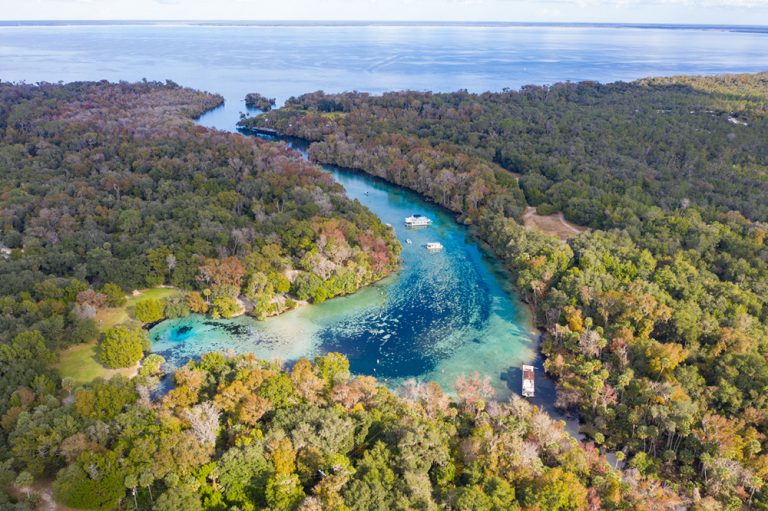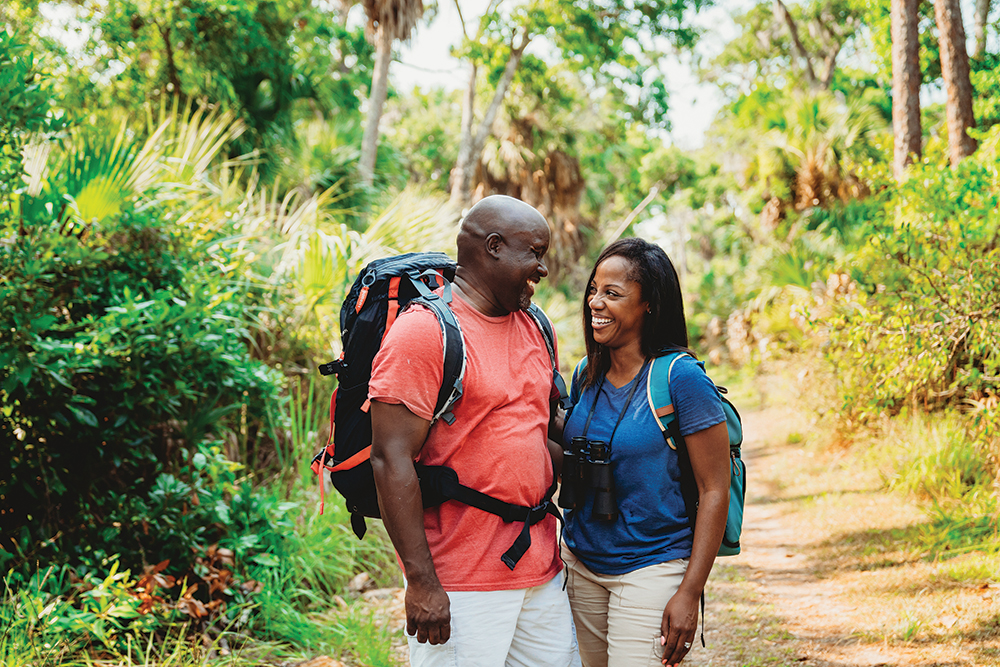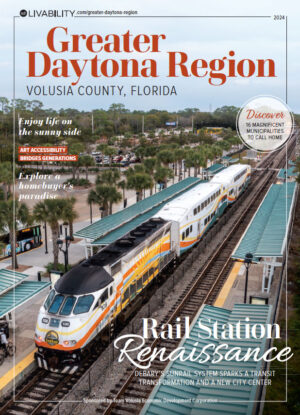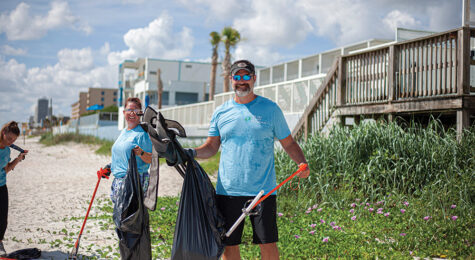More to Explore: The World is Your Oyster in the Greater Daytona Region
Outside recreation extends beyond the beach in Greater Daytona.

The Greater Daytona region is best known for the sandy sliver of land running along the coast of the Atlantic Ocean and with good reason. Those 47 miles of beautiful beaches are a main attraction for the area’s millions of annual visitors and surf-loving locals.
But venture inland, and the rest of Volusia County offers a view of another Florida. Trails and waterways crisscross the county, providing a path to many outdoor recreation opportunities. Plus, these activities can be enjoyed year-round thanks to Florida’s ideal weather (this is the Sunshine State, after all).
“That’s why I love it here,” says Arnett e Sherman, a cyclist and bird watching enthusiast who has lived in Greater Daytona since 1977. “You have all these great parks and wildlife areas that are close to home, so you don’t have to go very far to enjoy them. We really have a great county for that.”

Take to the Trails
In fact, one of the best ways to explore the region is through its trails, as more than 60 miles are available for hiking and biking. The most extensive of these is the Spring-to-Spring Trail, a 12-foot-wide paved pathway that travels through forests and by natural springs, connecting several small communities.
Tomoka State Park near Ormond Beach offers both hiking and paddling trails. There are also 6 miles of trails at the 21,500-acre Lake Woodruff National Wildlife Refuge along the St. Johns River. More than 200 species of birds have been documented here, including myriad wintering waterfowl.
“Lake Woodruff is incredible. I’ve met people from all over the world there,” Sherman says. “It has a variety of areas that you can hike as little or as much as you want, and you can see a lot of birds. It’s one of my favorite places.”
Additionally, Volusia County Land Management oversees 11 preserves that total more than 38,000 acres, 10 of which have trails totaling 46 miles.
“There’s plenty of room to get out and explore these natural areas,” Land Manager Cindy Venuti says. “There are different ecosystems across all those properties, so each of them is special in its own way as far as what you might see.”

Water, Water Everywhere
At the 2,479-acre Doris Leeper Spruce Creek Preserve in Port Orange, a 536-foot boardwalk connects to more than 3 miles of nature trails that lead to a 15-foot-high observation tower and continue to Rose Bay. Meanwhile, those visiting the 360-acre Lyonia Preserve in Deltona can wander along nearly 4.5 miles of trails and observe 160+ species of plants and 120+ species of animals, including the rare Florida scrub jay, a round-headed blue and gray bird.
Even inland, there is still plenty of water to enjoy, highlighted by the scenic St. Johns River, the longest in Florida. A popular destination for boaters and anglers, the St. Johns runs through western sections of the region, linking several of the area’s parks and wildlife preserves.
One of the most famous spots along the St. Johns is Blue Spring State Park in Orange City, one of the largest gathering sites for manatees during the winter. Visitors love being able to spot them in the crystal-clear water.
Many of Greater Daytona’s inland attractions can be seen along the River of Lakes Heritage Corridor, a 156-mile byway that connects the various waterways to a number of cultural and historical sites in the area.
The fairly famous collection of ocean beaches along the eastern edge of the region also offers a wide variety of outdoor recreation opportunities.
Lighthouse Point Park is a pedestrian-only beach in Ponce Inlet that is a popular spot for wildlife watching. Canaveral National Seashore is a barrier island with the longest stretch of undeveloped Atlantic coastline in Florida (15 miles of which are in Volusia County). And as for those who want to venture into the ocean, scuba diving and deep-sea fishing are just a short boat ride away.
Still, the best way to get an authentic feel of old-world Florida is to venture beyond the beach.
“Volusia County has a lot of natural areas with outdoor recreation right in our backyard,” Venuti says. “We have all these green spaces that people just don’t know about. But that’s where you can really find natural Florida.”
Greater Daytona Region Volusia County
This digital edition of the Greater Daytona Region Volusia County is sponsored by Team Volusia Economic Development Corporation.




